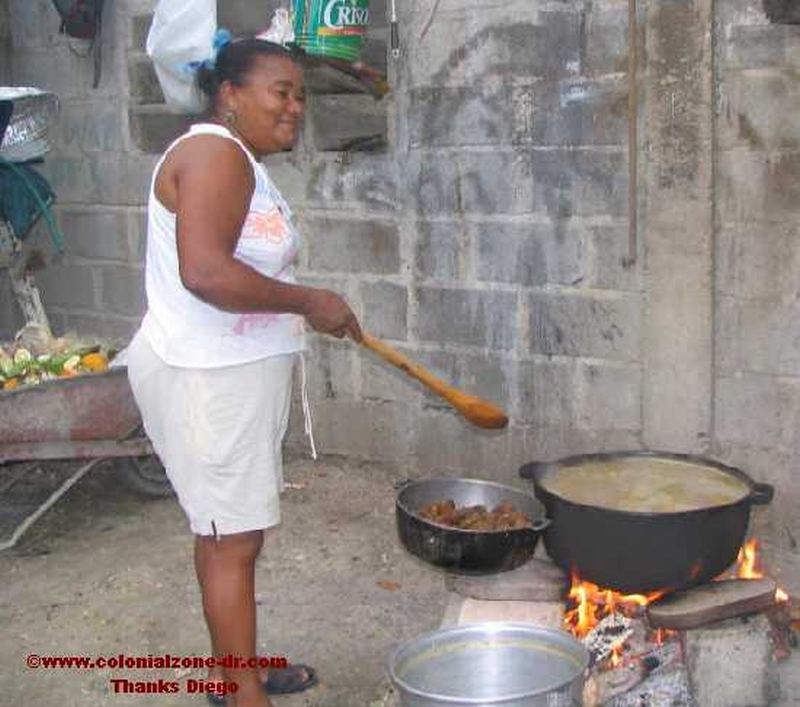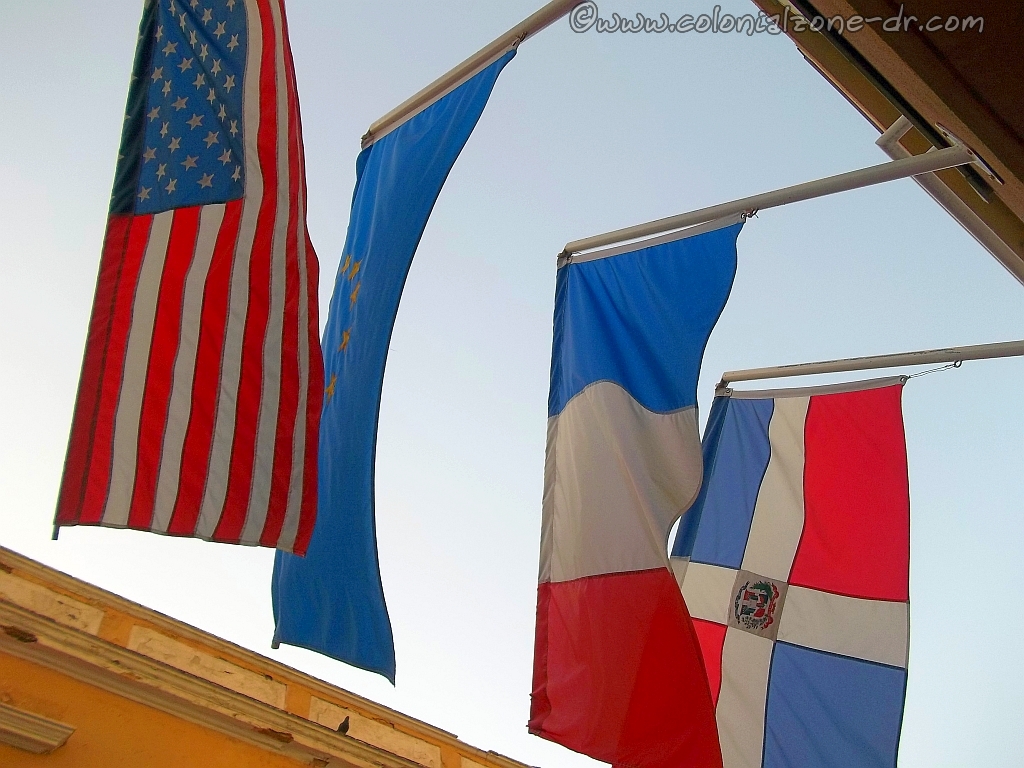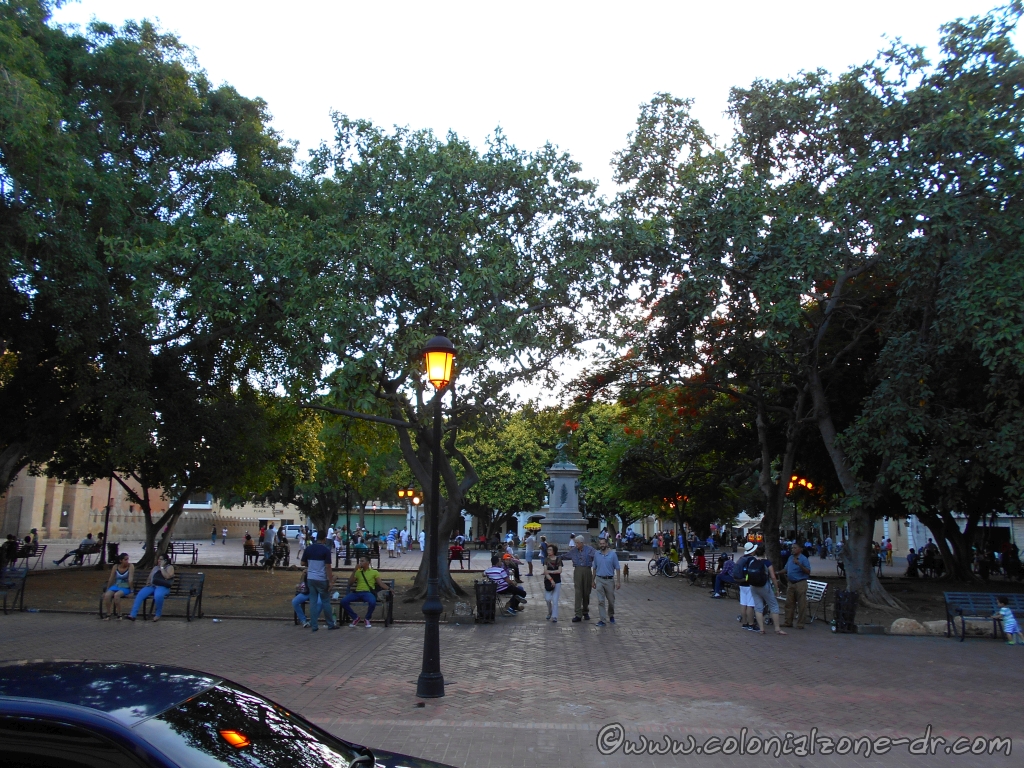Dominican Republic Dumb Facts, Trivia, and Useless Information
Here are all those facts you always wanted to know but just did not realize you wanted to know them. These may be very helpful when playing the game of Dominican Trivia that is so popular now (joke).
If you know of any more interesting and pertinent items to add please let me know. Let’s compile a list of all the useless, dumb, facts that everyone does not need to know.
Good reading for those who are bored, have nothing else to do with their time or are looking for some non-important good junk.
Note: We here at Colonial Zone-DR.com cannot vouch for the truth of this information. Consider the things listed here as fun, maybe true, could be true, maybe not true at all, or complete crap. It is all in fun, or is it?
*The worlds largest pot of Sancocho was prepared at the 7th Dominican Fair at La Sirena February 12, 2007. After 5 hours of cooking in a four meter cooking pot three thousand people got to eat this yummy, typical Dominican dish. Eleven chefs and their assistants used 300LBS of beef, 250LBS of pork, 150LBS of chicken, 500 plantains, 300LBS of malanga, plus the other ingredients used to make this hugh Dominican dish. (for information on how to make Sancocho)

*Even though Santiago is the second largest city in Dominican Republic, as of 2006 the metropolitan area of New York City had a larger population of Dominicans.
*There is an old law dating back to Trujillo’s era. He had the highest peak in the Caribbean known as Pico Duarte named after him. Legally, because of some kind of mistake, it is still called Pico Trujillo instead of Duarte.
*Dominican Republic has the only flag with a bible in it. It was designed by a Vexillographer (flag maker) who was a vexillologist (one who studies flags ) and into Vexillology (the study of flags). More information on the Dominican flag.

*In the Colonial Zone on July 8, 2001 the Association of Spanish Festivities in Dominican Republic held the islands first bull run, a version of Spains’ San Fermin bull run. A three-minute bull run took place from Calle Atarazana, through Vicente Celestino Duarte to Cristobal Colon. Youths raced and the poor, confused bulls had no idea what was happening. It seems that the Dominican bulls were just too lazy, resulting in them having to be pushed through the streets, instead of them chasing the participants.
*Did you know that there was a small town in Dominican Republic where it was discovered and documented in the early 1970s that girls turned into boys? It seems that children appearing to be girls turned into men at puberty. First girls when they reached puberty they grew testes, and a penis. They called these children ‘guevedoces’ which literally means “penis at 12 years”. Also known locally as machihembras (‘first women, then man’). It was published in the American Journal of Medicine. For pictures and more information http://www.usrf.org/news/010308-guevedoces.html
*The Austrian musician, Falco (Johann “Hans” Hölzel), famous for his electronic Euro-pop smash hit ‘Rock Me Amadeus’ in 1986, was killed in Dominican Republic. Returning to his home in Cofresí, Puerta Plata, after spending time drinking at a local bar, his vehicle was involved in a collision with a bus. He died instantly and was pronounced dead in the hospital on February 6th, 1998 from head injuries at the age of 40. He is buried in Vienna, Austria. There is a cross marking the location where Falco died in Montellano, Puerta Plata, Dominican Republic Falco CD on Amazon.
* Huracan is a Taino (natives that inhabited the island) word that is thought to have come originally from the Caribs (a cannibalistic tribe that also inhabited the island). Huracan was the Carib god of evil and that word is thought to have come from “Hurakan” who was the Mayan god of wind and storm. (More about hurricanes in Dominican Republic.)
*The longest baseball game in the Caribbean Baseball Series had 18 innings. The game was 6 hours and 13 minutes long. Played at the Roberto Clemente stadium in Puerto Rico February 2, 2007. The Aguilas Cibaeñas of Dominican Republic won 4 to 3 over the Tigres de Aragua of Venezuela.
Update – the Aguilas won the series for 2007!

*Lisa Marie Presley (Elvis Presley’s daughter) and Michael Joseph Jackson (Jackson 5) got married May 18, 1994. The ceremony was held at Casa de Campo in La Romano, Dominican Republic. Their marriage lasted only 20 months.
*Rush Limbaugh was detained by customs officers in Florida, USA when he landed after a visit to the Dominican Republic. He had a bottle of 29/ 100 MG pills of Viagra with him and he didn’t have a prescription! Bad Bad Rush!
*Can you speak only using your nose? Dominicans are famous for their “nose talk“. A little twitch here and a little wrinkle there. The nose knows.
*Did you know that the town of Nagua has its own slogan? “A Nagua tu entras si quieres, y sales si puedes” (translated, Enter Nagua if you want, leave if you can). Make sure to visit Nagua and you just may understand.
Watch a Barcelo rum television commercial taped in Nagua around 2006 and hear for yourself this slogan.
* Do you know what a Merentician is? It is a Merengue singer and Politician in one. Merengue artist Sergio Vargas is one.
* A man (boy) has to be 16 to get married and a girl (woman) needs to be 15 years of age. Even if the parents agree that the kids can be wed in matrimonial bliss most likely the government will not grant their wish. My thought: Many people here do not have birth certificates or birth records so how can they really prove their correct age? (they are trying to change this law now 3-17)
* Dominican Republic in position 74 of the 121 nations classified in the Global Peace Index in 2007 according to the British magazine The Economist, for reference The United States and Iran appear in positions 97 and 98. Norway and New Zealand are number 1 and 2. Sudan and Iraq come in the last place.
more information at: http://www.guardian.co.uk/international/story/0,,2091513,00.html
* Parque Colon is considered one of the great public places by PPS – Project for Public Spaces. It was voted on because of its vegetation, the nearness to historical landmarks, its accessibility, and its usability. They describe it as an “urban living room” and a “magic space”. see the article(7/09)

* According to an independent research group in Britain that has the goal of building a new economy, “centered on people and the environment.” in their “Happy Planet Index,” that seeks countries with the most content people. Surveying 143 countries Dominican Republic ranked second in 2009. Each year our little island country makes the top of the list as do many of the smaller islands. Check out the map of the Happy Planet Index for 2011 and make sure you come and visit one of the happiest places in the world!




